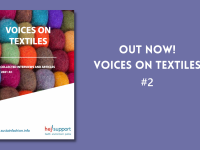The Water Consumption Attributable to Cotton Production

Water has a myriad of essential purposes within our society, including clothing production. However, overconsumption fueled by capitalism has driven water consumption within the textile industry to become highly unsustainable. In 2015, the fashion industry was responsible for the consumption of 79 billion cubic meters of water.1
Cotton is a widely used, natural-based fiber that is responsible for a significant portion of this water usage. As an example, it takes about 2,700 liters to produce one cotton T-shirt, and approximately 2 billion T-shirts are bought and sold around the world annually.1
Irrigation of cotton fields often relies on the use of freshwater, which can be lost during the production process through poor water management or evaporation.2
The World Wildlife Fund (WWF) has reported that approximately 70% of all the water used in the world is used for agricultural purposes.3 It has been postulated that of all agricultural commodities, cotton requires the most water.2
Depletion of freshwater resources is not the only issue presented with cotton production, water contamination is also a significant problem due to the fertilizer and pesticide runoff from cotton fields resulting in the pollution of variety of freshwater sources.2
Many countries accounting for a significant proportion of global cotton production are under high levels of water stress, including India, Pakistan, China, the United States and Turkey.1
The impact of cotton on water resources in the production stage of its lifecycle is immense, with the production of just one kilogram of cotton requiring the use of up to 20,000 liters of water;2 fortunately, with more efficient practices, this number can be reduced to 8,000 liters per kilogram.4 Even with these more efficient practices, the water consumption attributable to cotton production is remains significant, and reducing the water and overall ecological footprint of cotton production is an important goal.
Please refer to the following video produced by the World Wildlife Fund and National Geographic to learn more about the impact of cotton production on water resources.
References
- The Conscious Club. (2019, May 15). Water & Clothing. Retrieved from: https://www.theconsciouschallenge.org/ecologicalfootprintbibleoverview/water-clothing
- World Wildlife Fund. (n.d.) Sustainable Agriculture – Cotton. Retrieved from: https://www.worldwildlife.org/industries/cotton#:~:text=20%2C000%20liters,food%20crop%20in%20the%20world.
- World Wildlife Magazine. (2014). Handle with Care: Understanding the Hidden Environmental Costs of Cotton. Retrieved from: https://www.worldwildlife.org/magazine/issues/spring-2014/articles/handle-with-care
- Leahy, S. (2015, March 20). World Water Day: The Cost of Cotton in Water-Challenged India. The Guardian. Retrieved from: https://www.theguardian.com/sustainable-business/2015/mar/20/cost-cotton-water-challenged-india-world-water-day






